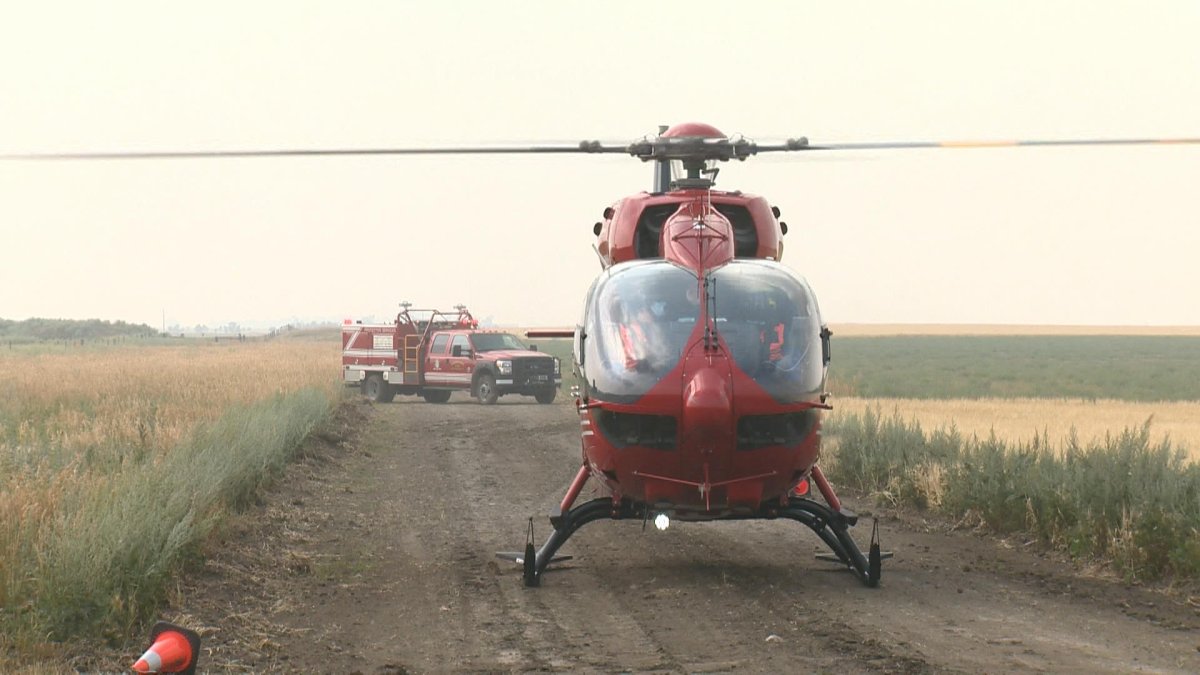Saskatchewan Government Insurance (SGI) teamed up with the Shock Trauma Air Rescue Service (STARS) to kick off August’s traffic spotlight on rural road safety.

One of the air ambulance service’s helicopters landed near White City, Sask., to help launch the month-long focus.
According to SGI, there are over 3,000 collisions on rural roads each year, resulting in 25 deaths annually on average.
A spokesperson for the Crown corporation, Tyler McMurchy, said rural roads can be a challenge to navigate for some drivers, especially those who don’t drive them every day.
“We have 5,700 km of gravel roads in this province. Those of us who have grown up in this province or live here now will have to drive on these roads at some point and that’s why it’s so important,” he said.
“Rural roads present different challenges when it comes to driving. In addition to what you would see on a paved road, you might be dealing with traction, visibility, different types of intersections.
“You’re more likely to encounter wildlife, farm equipment and you’re dealing with maybe reduced space that you have to navigate all those challenges as well.”
STARS critical care flight paramedic Darcy McKay said their crews offers two things when responding to crashes far away from major centres.
“They bring a higher level of care but also time. So anytime you have a traumatic injury, usually it’s a time-dependent injury so the quicker that can get them back to a tertiary care centre, the better,” McKay said.
“STARS doesn’t get called to fender benders. They get called to the very worst collisions out far away from major centres. And if you are hurt or you are killed or you’re in a crash on a rural road, it might be a while before somebody sees you,” McMurchy said.
SGI also reminded motorists not to drive high or drunk, with impaired driving still being the number one cause of fatality on all Saskatchewan roads.
“The problem is worse than on other roadways … On average, we see between 35 and 45 per cent overall of fatalities on Saskatchewan roads involve impairment on rural roads, that number gets close to 50 per cent,” McMurchy said.
“Over the past five years, we’ve seen 61 people lose their lives in impaired driving collisions on rural roads. So that’s just about half of the 125 people who have lost their lives.
“The idea that you may have had a few drinks and ‘I’m just going to take a quiet country road, I’m not going to get caught and I’m not going to hurt anybody else.’ Well, I don’t want people to just think about the idea of getting caught. I want them to think about the idea of getting killed because that’s what happens when we’re talking about impaired driving on rural roads.”



Comments